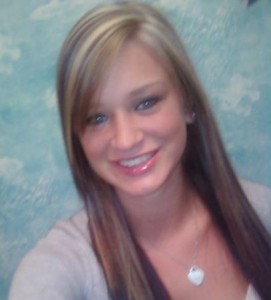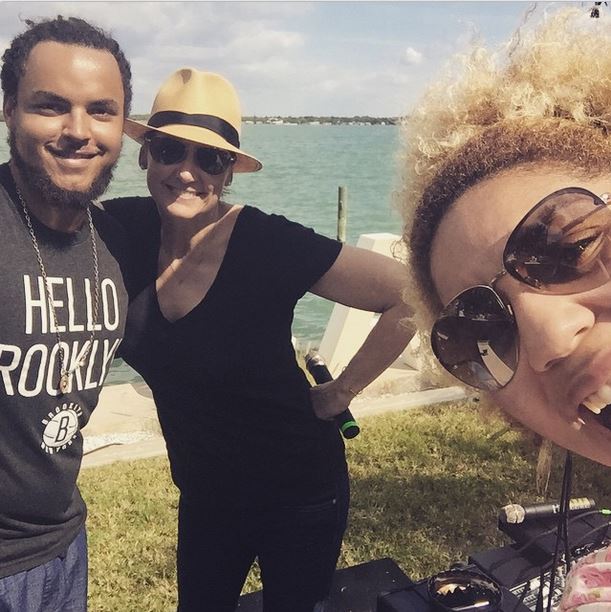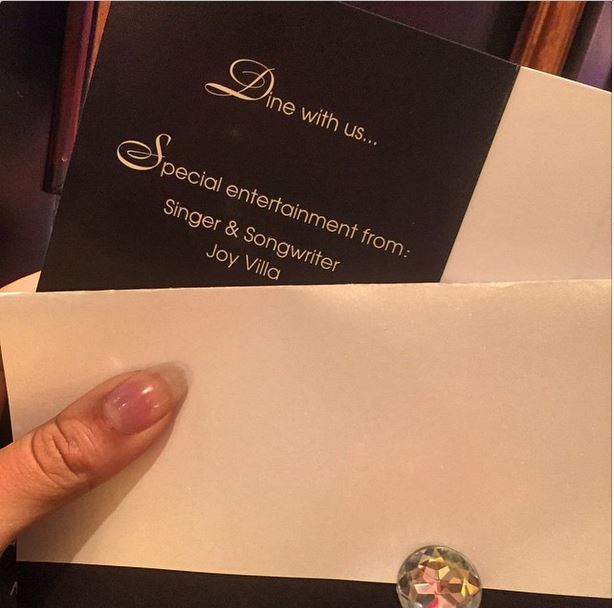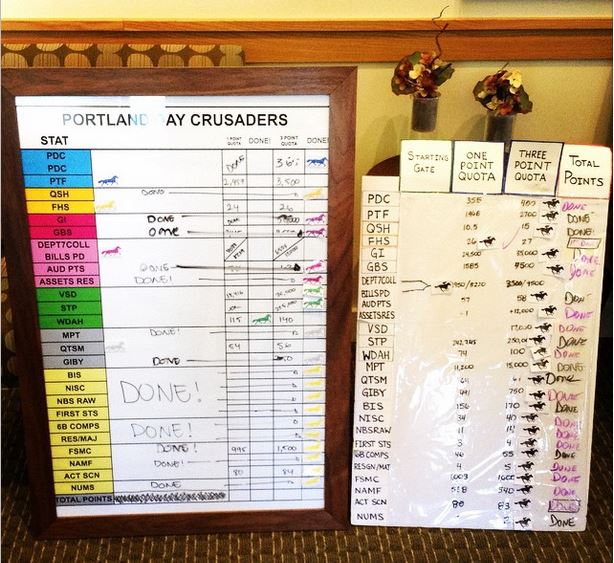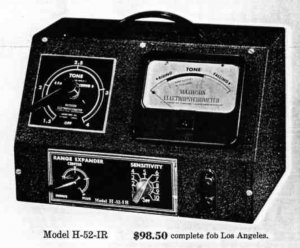 This week has been all about the excitement of Going Clear hitting theaters, and we expect a big burst of activity when the documentary by Alex Gibney and Larry Wright opens in New York, Los Angeles, and San Francisco for limited runs starting tomorrow. But we also want to keep up on our other subjects here at the Underground Bunker, including our ongoing project to mine through some great new government documents that a researcher and friend to the Bunker tracked down with the help of the Muckrock website.
This week has been all about the excitement of Going Clear hitting theaters, and we expect a big burst of activity when the documentary by Alex Gibney and Larry Wright opens in New York, Los Angeles, and San Francisco for limited runs starting tomorrow. But we also want to keep up on our other subjects here at the Underground Bunker, including our ongoing project to mine through some great new government documents that a researcher and friend to the Bunker tracked down with the help of the Muckrock website.
Last time, we got a look for the first time at L. Ron Hubbard’s high school grades. This time, we spin forward to the 1950s, when Hubbard got crosswise with a couple of his most interesting early supporters. One of them, Volney Mathison, was the actual inventor of the device that Scientology today calls the “E-meter.” The other figure was Alphia Hart, whose Dianetics ‘zine, The Aberree, is an invaluable guide to the early days of Hubbard’s movement.
Mathison was an inventor who had an interest in psychotherapy and found in Hubbard a man who was investigating similar lines. Hart was a writer who, after the war, had witnessed the Bikini Atoll atomic bomb test. He came to Dianetics looking for a cure for his high blood pressure.
By 1963, when the Food and Drug Administration raided Hubbard’s Washington DC “org” in order to confiscate E-meters, the two men were no longer enamored of Hubbard and Scientology. And the FDA files we have for you today — never before put online — show how they each reacted to the idea of becoming sources and witnesses for the agency’s ongoing investigation.
When Hubbard published Dianetics in 1950, there was no electrical device required for auditing a person to becoming “Clear,” a process that Hubbard estimated in the book could take as little as 20 hours of counseling. But by 1951, Hubbard had become intrigued by Mathison’s meter, which measured skin galvanism, just one part of what an actual lie detector machine measures — heart rate, blood pressure, and respiration.
Despite its primitive nature, the meter was irresistible to Hubbard. His counseling involved getting people to “remember” their experiences in the womb (Dianetics) and then, after 1952, to remember back even farther, to fantastic experiences that had occurred in previous lifetimes (Scientology). But how could a subject really know if these “memories” were real? With the meter, an auditor and a preclear could supposedly “confirm” the reality of what was being said in session by the way the needle on the meter moved.
But by 1954, as Bent Corydon tells us in his book, L. Ron Hubbard, Messiah or Madman?, Hubbard had soured on Mathison — because he wouldn’t give Hubbard the patent to his invention.
He had refused to surrender the patent to his invention. It was the Mathison E-Meter, and Mathison was determined to keep it that way. So in late 1954 the use of the E-meter was disconinued by Hubbard. Wrote Hubbard: “…While the E-Meter is an interesting investigation instrument and has played its part in research, it is not today used by the auditor…As we long ago suspected, the intervention of a mechanical gadget between the auditor and the preclear had a tendency to depersonalize the session.”
But then, in 1958, two of Hubbard’s followers created a new E-meter that worked essentially the same as Mathison’s device, but they named it the Hubbard electrometer, and suddenly E-meters were invaluable to auditing, and have been ever since.
The FDA, meanwhile, was unhappy that Hubbard was making health claims about the E-meter, and that he seemed to be claiming that Scientology processing could heal almost anything. And that was the basis for its investigation and raid, which happened on January 4, 1963. The FDA continued its investigation as the agency and Scientology fought a bitter legal battle until, in 1971, a settlement was reached that required Scientology to attach a label on all E-meters denying that it was for the diagnosis of any illness.
Anyway, a few weeks after the raid, as FDA inspectors were looking for more information about Hubbard and his meters, a report came in about the guy who claimed to have actually invented the devices…
“Mr. Volney G. Mathison, who claims to be the developer of the electropsychometer, is incensed over the activities of Hubbard and the Church of Scientology. He has called me twice to express his views of these alleged imitators of his invention,” the FDA file reads.
Mathison was concerned that following the raid, with its e-meters “in difficulty” with the FDA, Hubbard or his followers might try to get their hands on a bunch of Mathison meters in the meantime. And Mathison wasn’t happy about that.
In a letter to the FDA dated January 17, Mathison explains his concern.
Some years past, we supplied Hubbard with a small model electropsychometer; but cancelled the distributorship because of what I considered to be possibly harmful and destructive interpretations of the instrument registrations of the psychogalvanic reflex when used in Hubbard’s classes and by his students. Hubbard subsequently began producing the spurious imitation of the patented electropsychometer which he called the “electrometer.” I intend to take precautions to make sure that no Mathison electropsychometers are obtained by any one for the purpose of promulgating or continuing the concepts and methods of Hubbard or his scientology concern.
Mathison not only considered Hubbard a fraud, he was happy to help out the FDA with its investigation, and sent several letters trying to help the FDA find other possible witnesses.
One of the people the FDA contacted in the next few weeks was Alphia Hart. He and his wife, Alice, were interviewed in their Enid, Oklahoma home about their experiences in Scientology.
Alphia had been a script writer who worked at Lowery Air Force Base in Denver, and he was the only civilian writer who was assigned to witness the Bikini Atoll bomb test. Looking for a solution to his high blood pressure after the war, he had become involved in Dianetics and had taken every course that existed at the time. In 1952, Hubbard was recovering from a disastrous divorce and bankruptcy, and he’d lost the use of the word “Dianetics.” Relocating to Phoenix, Hubbard reorganized, but he needed a new name.
Mr. Hart was Office Manager for Hubbard’s Communications Office in Phoenix, Arizona, during 1952. Hubbard at this time was searching for a substitute name for Dianetics. Hart suggested that the process of treatment be called Scientology. Hubbard several months later began using the term “Scientology.”
We’ll put it to our excellent community of experts — is Alphia Hart’s claim to have invented the name a claim that’s well known? We aren’t sure.
The next year, 1953, Hubbard decided the best way to deal with pesky government meddling about his health claims was to reorganize once again, this time making Scientology a “church.”
Mr. Hart attended an advanced course in Dianetics at Philadelphia, Pennsylvania, during 1953. L. Ron Hubbard made a personal appearance during one of the night class sessions and announced the formation of the Founding Church of Scientology. Hubbard explained to the students that under the cloak of religion the practitioners could then claim the protection of the constitutional amendment dealing with freedom of religion and circumvent some medical practice laws.
The Harts met at the Philadelphia Doctoral Course in 1953, and then got married. Shortly after that, they had had enough of Hubbard and moved to Enid. And that’s when Alphia began putting together his newsletter, The Aberree, which debuted in April 1954.
One of the wackiest stories in The Aberree was something that Mathison wrote in December 1954, “Galaxy T-8 Patrol Blocks Death Ray.” It’s great fun.
Hart confirmed to the FDA that Mathison had invented the E-meter, but he defended their use in Dianetics. And he made it quite clear that he wasn’t going to cooperate with the FDA if they thought they were going to use him as a witness in court:
Mr. Hart volunteered this information: “If your office is thinking of subpoenaing me as a Government witness, you had better know I’ll be a hostile witness. I haven’t the time to spare from my work here in the first place, and I don’t think your office is taking the right approach by proceeding against the E Meters instead of against Hubbard.”
Hart told Mathison the same thing, and the file includes letters back and forth from each of them. The two former Hubbard supporters were apparently curious to know how the FDA investigation had got started. Hart said he’d heard that “Hubbard, in his egomania,” had tried to get President Kennedy interested in his movement, but that only resulted in a government agent surreptitiously taking courses at the Washington DC church, which in turn led to the raid. Wrote Hart, to Mathison…
Hubbard probably will spend enough money on attorney fees to make it a rather interesting case — and he’s certainly doing a lot of propaganda mailing to members, ex-members, and to churches. We continually get letters and bulletins — sent first class and via air mail — and if these come to us, how about the assault on the more loyal? It must be terrific — and costly. But, as I said in my other letter, I’ll not be at the trial. I’ve no intention of being a witness — pro or con.
It’s interesting to us to see an early Dianetics supporter arguing that the problem with Scientology was its leader, not its ideas or its e-meter. This was 1963, but we hear such strong echoes in 2015, don’t we?
DOCUMENTS
Volney Mathison and Alphia Hart and the FDA investigation
——————–
Links of note
Our friend Synthia Fagen tries to explain Scientology to a comedian, and we wish he’d crack fewer jokes and just listen to the wisdom of Syndy’s amazing experiences. Like always, she does a great job.
——————–
While we’ve been caught up in a lot of excitement around the theatrical release of Going Clear, we don’t want to overlook the grim reality that a lot of people are facing thanks to Scientology and its controversies.
Robert Murphy reminded us that today would have been his daughter’s 23rd birthday. But Stacy Murphy died while in Narconon Arrowhead’s withdrawal unit after she managed to get her hands on an illegal substance during a short outing from the facility.
Stacy is one of three people who died at the Scientology drug rehab facility in a 9-month period. Those deaths sparked investigations at the county and state level that have still not been resolved. Numerous lawsuits have also been filed against the rehab center, and we continue to hear that Arrowhead is on its last legs as fewer and fewer patients are housed there.
Robert Murphy has appeared on NBC’s Rock Center and other television shows, he’s waited patiently as the state has become embroiled in a controversy over its investigation of Arrowhead. And still he waits. We hope he gets some resolution soon.
——————–
Bonus photos from our tipsters
Connor Cruise and Joy Villa are performing at a fundraiser tonight at the home of Jen Anderson in Florida, according to Joy’s Instagram…
Down to the wire for the Birthday Game at the Portland Ideal Org!
Scientologists are using social media more than ever. Drop us a line if you spot them posting images to Instagram or Facebook!
——————–
Posted by Tony Ortega on March 12, 2015 at 07:00
E-mail your tips and story ideas to tonyo94@gmail.com or follow us on Twitter. We post behind-the-scenes updates at our Facebook author page. Here at the Bunker we try to have a post up every morning at 7 AM Eastern (Noon GMT), and on some days we post an afternoon story at around 2 PM. After every new story we send out an alert to our e-mail list and our FB page.
Learn about Scientology with our numerous series with experts…
BLOGGING DIANETICS: We read Scientology’s founding text cover to cover with the help of LA attorney and former church member Vance Woodward
UP THE BRIDGE: Claire Headley and Bruce Hines train us as Scientologists
GETTING OUR ETHICS IN: Jefferson Hawkins explains Scientology’s system of justice
SCIENTOLOGY MYTHBUSTING: Historian Jon Atack discusses key Scientology concepts
PZ Myers reads L. Ron Hubbard’s “A History of Man” | Scientology’s Master Spies | Scientology’s Private Dancer
The mystery of the richest Scientologist and his wayward sons | Scientology’s shocking mistreatment of the mentally ill
The Underground Bunker’s Official Theme Song | The Underground Bunker FAQ





